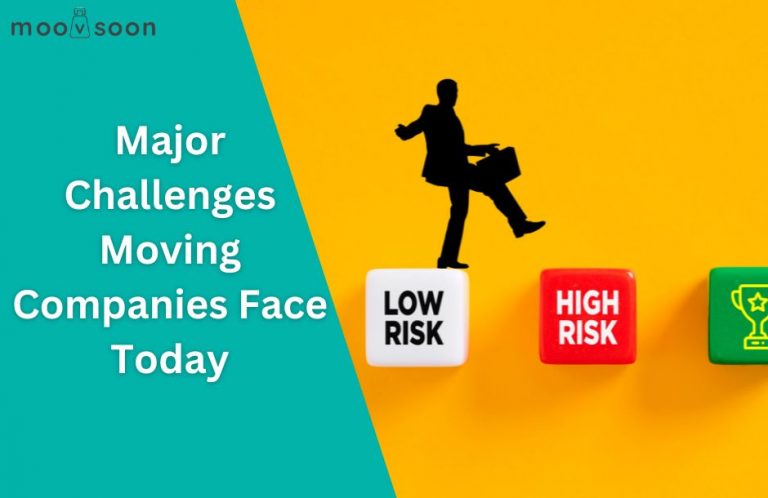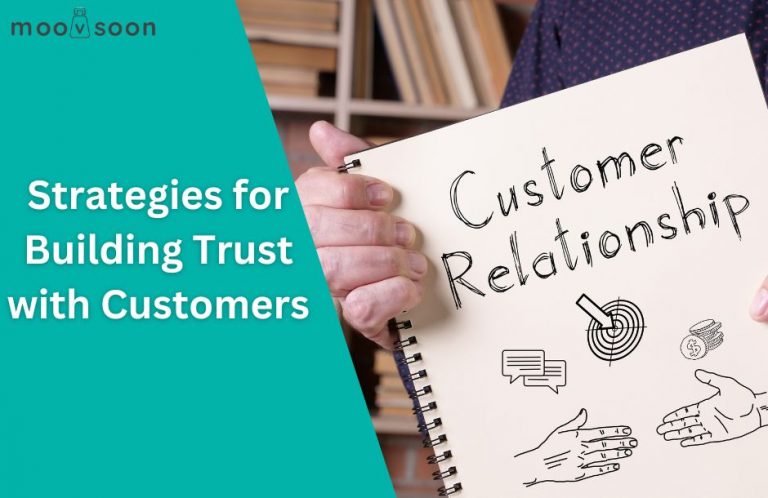Free Moving Company Business Plan Example
Did you know that nearly 40 million Americans move each year? If you’re considering starting a moving company, a free business plan example could be your stepping stone to success. It’s not just about trucks and boxes; understanding market dynamics, customer needs, and financial planning is essential.
This plan outlines strategies not only for launching your business but also for sustaining it in a competitive market. By leveraging technology and emphasizing customer satisfaction, you can set your company apart. So, are you ready to explore how you can create a robust foundation for your moving business?
Executive Overview
The Executive Overview serves as the cornerstone of the moving company’s business plan, offering a strategic snapshot of its core operations and aspirations.
You’ll find that it encapsulates the company name, location, and a brief on its day-to-day operations, setting the stage for emphasizing business differentiation. Offering a brief summary of the moving company highlights the unique aspects that foster customer loyalty, such as the extensive range of moving and relocation services.
The overview underscores the company’s fleet size and operational scope, essential elements in differentiating your business in a competitive market. The company ensures security measures are in place to protect its data, reflecting how Cloudflare provides performance and security solutions.
Moreover, it articulates the mission and objectives, defining the company’s vision with a focus on customer satisfaction and market expansion. The company employs security measures to protect its data, similar to how Wordfence provides firewall protection for WordPress sites.
You’ll notice benchmarks for success, like customer satisfaction rates, which are pivotal in cultivating loyalty and sustaining growth. The management team’s expertise, from the CEO to the Operations Manager, is vital in driving these strategic initiatives, ensuring the company’s leadership is well-positioned to meet its financial objectives.
Market Insights
As you assess the target market segmentation, consider focusing on regional movers, renters, and seniors, given their significant roles in shaping demand. The moving industry is projected to have a revenue of $23.2 billion in 2024, showcasing its robust performance despite economic challenges.
Analyzing industry competition reveals a fragmented landscape with over 21,000 businesses, requiring a strategic approach to differentiate your services. With over 79% of companies optimistic about profitability in 2024, prioritizing competitive pricing, enhanced marketing, and service diversification will position your company effectively in this evolving market.
Target Market Segmentation
Understanding the target market segmentation for a moving company is essential for tailoring services effectively and maximizing market share. By analyzing your target audience, you can align your offerings with demographic trends, geographic preferences, psychographic factors, and behavioral patterns.
Consider these key insights:
- Relocation Motivations: Young professionals and families often move for career advancement and better living conditions.
- Service Expectations: Middle to upper-income households demand efficient and reliable services, expecting high customer satisfaction.
- Geographic Preferences: While urban areas remain attractive, there’s a growing shift towards suburban and rural locations for more space.
- Psychographic Factors: Values like spacious living and affordability, especially post-COVID-19, influence moving decisions.
- Usage Frequency: Understanding patterns, like the average 11.7 lifetime moves, helps in predicting service needs. The residential moves segment continues to dominate the market, driven by factors such as remote work and lifestyle changes.
Your brand perception hinges on meeting these expectations and providing exceptional customer experiences. The market is projected to grow at a CAGR of 5.23% from 2024 to 2029, which indicates strong potential for expanding services and capturing new clientele.
Focusing on feedback and reviews can improve your service offerings, enhancing customer loyalty.
Also, consider seasonal and regional trends; summer typically sees a spike in moves, especially in North America, which currently dominates the market.
Industry Competition Analysis
In traversing the competitive landscape of the moving services industry, gaining a thorough understanding of market dynamics is vital. The industry, with its projected $23.2 billion revenue in the US by 2024, is characterized by fragmentation and low market concentration.
This creates both challenges and opportunities as you navigate competitor strategies. Major players like Arcbest Corporation and Atlas World Group Inc. dominate the scene, yet they only command a small revenue share, indicating ample room for strategic entry and growth. The industry’s growth rate, recorded at a CAGR of 2.4% from 2019 to 2024, underscores the potential for new entrants to capitalize on expanding opportunities.
Understanding your target market through detailed customer profiles and segmentation is crucial to tailor your offerings effectively. Leveraging competitor strategies is essential for carving out your niche. Effective digital marketing, including SEO and social media, will help you reach your target market more efficiently. Forming partnerships with real estate agents can enhance your visibility and credibility, tapping into a steady stream of potential clients.
Customizing services to meet specific needs such as offering eco-friendly options or flexible pricing—can differentiate your offerings in a crowded market. Observing trends like the rise in suburban moves and the integration of technology, such as AI and mobile apps, will guide you in aligning your strategies to market demands. By keeping a keen eye on these dynamics, you can position yourself strategically within the industry.
Service Offerings
To effectively serve your moving needs, our company offers a diverse range of service offerings designed to meet various client requirements.
By implementing strategic service differentiation strategies, we guarantee that our offerings stand out and align with customer satisfaction metrics. Here’s what you can expect:
- Free Move Services: Enjoy 2.5 hours of complimentary move time for rentals over $1,200 per month. There’s no inventory fee or extra charge for special handling, ensuring transparency and satisfaction.
- Additional Moving Services: We provide packing, unpacking, custom crating, and furniture assembly assistance. Our door-to-door service is available for both local and long-distance moves, enhancing convenience and efficiency.
- Customized Moving Plans: Tailor your move with detailed quotes based on household goods. We recommend visual surveys for larger residences or long-distance relocations, offering in-home estimates for accuracy. Obtaining a moving quote is crucial as it helps in budgeting and planning logistics efficiently for your move.
- Cost and Pricing Transparency: Benefit from upfront flat rates for long-distance moves, with hourly rates between $25 and $85 per mover. Travel fees and additional service charges are clearly included in the estimates. UMoveFree provides the most inclusive free move in the industry, ensuring no hidden fees or fine print.
- Flexible Options for Smaller Rentals: For rentals under $1,200, choose a 1-hour move credit or a $100 rebate, adding flexibility to your moving plan.
Our offerings are meticulously crafted to provide value, transparency, and satisfaction.
Strategic Marketing
With a thorough array of service offerings designed to meet diverse client needs, it’s equally important to ensure these offerings reach the right audience effectively. Leveraging local SEO and digital marketing strategies can notably enhance your visibility and client engagement. Start by creating a Google My Business profile.
This boosts your presence on Google Maps and local search results, drawing in potential customers. Optimize your website with targeted keywords, making sure it’s easy to navigate and includes clear calls to action.
Here’s a strategic marketing overview:
| Strategy | Action Plan |
|---|---|
| Local SEO | Optimize Google My Business, encourage positive reviews |
| Website Optimization | Enhance site aesthetics and usability |
| Social Media Engagement | Use platforms like Facebook, LinkedIn for content sharing |
| Video Marketing | Share educational content on YouTube |
Incorporate digital marketing by engaging audiences on social media and running PPC ads. Use email marketing to maintain client relationships and share promotions. Form partnerships with local real estate agents for relocation leads and cross-promotion. By strategically utilizing these tools, you can assure your moving company is not just visible, but also a trusted choice in the market.
Financial Outlook
In crafting your financial outlook, it’s vital to start with a detailed breakdown of startup costs to establish a solid foundation for your venture.
Projecting revenue and expenses accurately will help you navigate market fluctuations and set realistic targets for growth.
Additionally, maintaining a healthy profit and cash flow is essential to guarantee your moving company remains competitive and financially resilient.
Startup Cost Breakdown
Maneuvering the startup costs for a moving company requires a strategic approach to assure financial success. First, you’ll need to focus on cost estimation and evaluate funding options. This involves breaking down the expenses into several key categories.
- Legal and Regulatory Costs: You’ll face registration fees ranging from $50 to $500, licensing and permits costing between $300 and $2,500, and insurance premiums that can hit $10,000 annually. Don’t forget the USDOT number and state permits.
- Vehicle and Equipment Costs: Investing in moving trucks can set you back $20,000 to $150,000. Opting for used trucks might cut costs to $20,000–$40,000. Equipment and supplies range from $1,000 to $20,000. Specialized equipment can climb to $150,000 or more.
- Marketing and Advertising Costs: Allocate $2,000 to $10,000 for marketing expenses. Building a website costs about $600, while office signage can range from $2,000 to $12,000.
- Operational and Miscellaneous Costs: Expect to pay $500 to $5,000 for office space and utilities. Employee payroll varies, and fuel and maintenance can add $500 to $2,000 monthly.
- Security Deposits: These range from $2,000 to $6,000.
Each of these costs requires careful planning to assure that your business is financially viable from the start.
Revenue and Expense Projections
Strategically projecting revenue and expenses is essential for the financial health of your moving company. Understanding revenue drivers like market size, growth trends, and sales forecast inputs is critical. The industry, valued at $23.2 billion in 2024, is influenced by key factors such as the average price per move and the number of monthly transactions.
Residential moving remains the largest revenue stream, while commercial and ancillary services like packing and junk removal bolster earnings. Stay attuned to housing market activities and economic recovery, as these impact revenue potential. For instance, projected home sales growth of 13% in 2024 can enhance your earnings.
Expense management demands a strategic approach to maintain profitability. Labor, fuel, and equipment form the bulk of operating costs. Allocate 10-12% of revenue towards marketing to guarantee visibility.
In response to rising interest rates, consider price adjustments and diversify services. Exploit opportunities like discounted equipment from existing firms and recruit skilled workers accordingly. Historical data and market research guide expense forecasting, helping you navigate financial challenges.
Be mindful of seasonal variations and economic shifts, guaranteeing your business remains agile and competitive in a fluctuating market landscape.
Profit and Cash Flow
Achieving profitability and maintaining a robust cash flow are pivotal to the success of your moving company. Effective profit forecasting and cash management strategies are at the heart of your financial outlook.
Start by making certain sales growth surpasses inflation, which will support long-term viability. Keep an eye on your profit margins; while they should ideally be stable or expanding, expect initial losses until you hit the breakeven point—typically in the second or third year.
Compare your profit margins against industry benchmarks, such as the 10.8% gross profit margin noted in 2020, to gauge your competitive standing.
Cash flow management requires a strategic approach:
- Operating Cash Flow: Make certain core activities generate a positive cash flow.
- Investing Cash Flow: Align investments in assets like vehicles with balance sheet goals.
- Financing Cash Flow: Plan for raising or repaying financing.
- Seasonal Variations: Prepare for fluctuations due to demand changes.
- Cash Crisis Prevention: Maintain an updated cash flow forecast to detect potential shortfalls.
Operational Framework
While an operational framework is crucial for any moving company, it’s not just about having the right resources; it’s about deploying them effectively. To succeed, prioritize fleet enhancement and regular equipment maintenance. A diverse fleet of vans, trucks, and specialized equipment guarantees operational scalability and service reliability. Strategically located warehouse facilities enhance workflow efficiency by providing easy access to various areas, enabling prompt customer engagement.
| Key Areas | Strategies | Benefits |
|---|---|---|
| Fleet Management | Fleet enhancement, maintenance | Service reliability, scalability |
| Workflow Processes | Established workflows, training | Efficiency, consistency |
| Customer Service | Prompt handling, loyalty programs | Engagement, long-term relationships |
Focus on developing established workflows and processes for seamless pickups and deliveries. Train your staff rigorously, guaranteeing they understand the importance of these processes to maintain consistency and enhance workflow efficiency. Leverage moving-specific software for calendar management, avoiding overloading staff and guaranteeing peak process improvement.
Customer service remains a priority. Train your team to handle inquiries swiftly and professionally. Implement loyalty programs to foster long-term relationships, and continuously gather customer feedback to refine your services. Align your organizational structure with business goals, guaranteeing adaptability and clear roles. This structured approach not only enhances client accessibility but also drives continuous improvement.
Growth and Expansion
Expansion is a critical phase for any moving company aiming to capture new opportunities and increase market share. To strategically grow, you must first identify new customer segments by analyzing demographic data, targeting both residential and commercial clients.
Understanding market trends, such as the rising demand for eco-friendly moving solutions, will set you apart from competitors. It’s crucial to evaluate competitor strengths and weaknesses to carve out your niche and enhance brand differentiation.
Consider these growth strategies:
- Customer Segmentation: Tailor services to specific client needs.
- Geographical Expansion**: Assess new regions for service expansion and increased market demand.
- Funding Sources: Explore loans, grants, and personal savings to support your investment requirements.
- Networking Strategies: Engage with local events and build partnerships with real estate agencies.
- Community Engagement: Sponsor local events to increase brand visibility and trust.
Financial projections should include anticipated revenue growth from expanded services like packing and storage, along with an analysis of profit margins and break-even timelines.
Marketing efforts should focus on online channels and local networking to reach new customers. By strategically considering these factors, your moving company can successfully navigate growth and expansion.
Conclusion
In summary, your moving company can thrive by implementing a business plan that’s as carefully structured as a well-packed moving truck. By emphasizing customer satisfaction, leveraging technology, and strategically targeting your market, you’ll carve out a competitive edge. Focus on diverse service offerings and sustainable practices to guarantee growth. With a clear roadmap in place, your company is well-positioned for success, maneuvering the competitive landscape with precision and efficiency.



